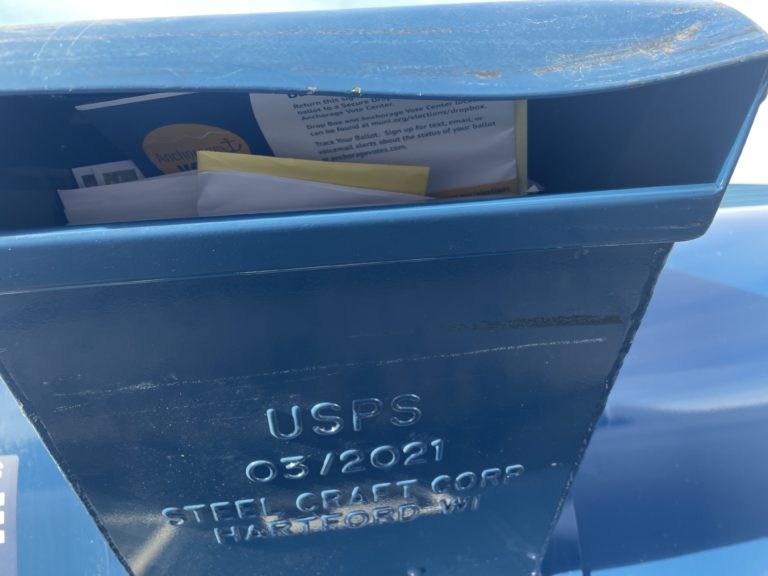By LINDA BOYLE
March 12 marks the five year anniversary of when Covid first entered our state. That case was a cargo jet pilot who was treated locally and then quarantined in a hotel in Anchorage.
Alaska was clearly aware that much like cockroaches, when there was one case of Covid, there would be others. We are a hub for air cargo shipments coming from Asia where the virus originated.
Alaskans watched nightly mainstream media news where deaths were being reported, increasing fear among its citizens. Little was known about how to treat or control this disease. Alaska medical facilities knew they lacked adequate personal protective equipment and ventilators for a potential surge of Covid.
In response to the threat, the Department of Health and Human services recommended people mask up if they were in public. But the governor never mandated masks even though most municipal leaders eventually did. In June of 2020, then-Mayor Ethan Berkowitz issued a mask mandate. The Mat-Su Borough, on the other hand, never did.
The differing approaches divided people with the “mask everyone” group gaslighting the “non-mask wearing” group.
By March 29, 2020, the legislature gave the governor the authority to do whatever was necessary to prevent a Covid crisis.
But the state’s recommendations for a commonsense approach of hand washing, cleaning and disinfecting surfaces, staying home when sick, and protecting the vulnerable fell short in the minds of Democrat legislators and activists from around the state. They wanted statewide mask mandates and mandatory business closures to “slow the spread”.
That didn’t happen under Governor Dunleavy’s leadership.
Dunleavy’s commonsense approach led to those on the far right being mad that he even made these recommendations. Things got ugly among friends and neighbors.
In October of 2021, the Alaska Covid Alliance (now Alaskans 4 Personal Freedom) held its first conference to provide Alaskans with information being withheld from them by the mainstream narrative.
At that time, recommendations for the Covid jab were out along with telling anyone who contracted Covid to stay home if sick. You were only to come to the hospital if you had difficulty breathing. Death rates were high for those hospitalized patients who were placed on a ventilator.
Over 1,200 people attended that first conference to learn about early treatment for Covid and the possible use of off-label drugs and other over-the-counter remedies.
The recommendations coming from the doctors who presented at the conference led to apoplexy. Some Alaska mainstream doctors tried to have several of our good doctors’ licenses revoked based on spreading “misinformation.”
Over 600 Alaskans wrote to the State Medical Board describing how the modalities recommended by our doctors had saved lives or helped with reducing the severity of Covid. Fortunately, the State Medical Board chose not to revoke their licenses. Kudos to them.
Doctors in other states weren’t so lucky. Several lost their license or board certifications.
What we have now learned is that social distancing was just a wag; lockdowns were never meant to be for just a few weeks; Covid jabs did not stop you from getting Covid; more side-effects occurred than initially admitted; masks had little effect on stopping transmission; and our children never were at great risk.
However, our children’s education was dramatically affected by school lockdowns.
Even after the jabs, the lockdowns, the masks, and social distancing, the U.S. had the largest number of Covid deaths among highly developed nations.
Yes, we have a larger population than many countries, but when you normalize for that, we still were number three in the world for Covid deaths.
Our preventive measures seem not to have worked.
Just like many pandemics, herd immunity led to the control of the Covid virus. And as the virus mutated, it became less and less lethal.
Surprisingly, our State Public Health Department is still pushing the Covid jab.
A lot of people who took the first set of jabs, aren’t taking anymore. There is a severe lack of trust in the medical community because of the lies told to us during the Covid years.
The Attorney General of Missouri, Andrew Bailey, in the U.S. District Court for The Eastern District of Missouri sued the Chinese Communist Party (CCP) for unleashing the Covid-19 pandemic that had terrible consequences for the State of Missouri and our country.
And he won the case with a $24 billion judgment.
“This is a landmark victory for Missouri and the United States in the fight to hold China accountable for unleashing COVID-19 on the world,” said Attorney General Bailey. “China refused to show up to court, but that doesn’t mean they get away with causing untold suffering and economic devastation. We intend to collect every penny by seizing Chinese-owned assets, including Missouri farmland.”
More accountability is beginning to happen. The U.S. government through its Countermeasures Injury Compensation Program just awarded $2.5 million to an individual who developed thrombosis with Thrombocytopenia Syndrome (blood clots with low platelet count) from the Covid jab. There are still over 14,000 claimants waiting for their cases to be adjudicated.
It’s time to open the books. Tell the truth. Give people the information they deserve about the Covid years. Until then, we many will continue to not trust the medical community. Because of this lack of trust, people are putting their health at risk by not getting routine follow-up care.
The good news for me is my physician doesn’t even bother to ask me about the Covid jab. She provides me the care I need based on my desires and needs. I can trust her.
We need more healthcare providers that are honest with their patients.
We need to bring back trust in the medical profession.
We need the truth.
Linda Boyle, RN, MSN, DM, was formerly the chief nurse for the 3rd Medical Group, JBER, and was the interim director of the Alaska VA. Most recently, she served as Director for Central Alabama VA Healthcare System. She is the director of the Alaska Covid Alliance/Alaskans 4 Personal Freedom.








